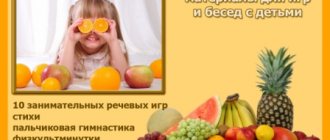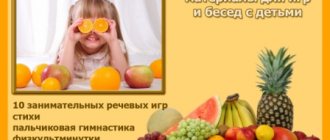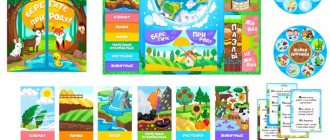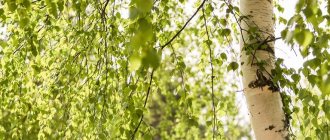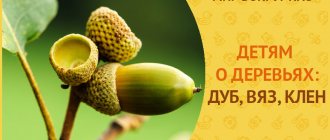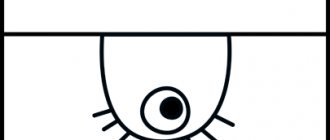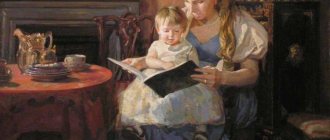Lapbook “Trees of our region”
Elena Voinova
Lapbook “Trees of our region”
Dear Colleagues!
Every kindergarten teacher is now in search of new forms of organizing educational activities. The result of such a search in my case was a thematic folder or laptop .
I am working on the environmental topic of our region and am faced with the problem that children and even some parents do not know their region , in particular what trees , animals, insects live in our area . A laptop , in my opinion, will help solve this problem.
My first trial lapbook is called “ Trees of our region ”
.
The children enthusiastically accepted this new product, the parents also really liked the innovation and further lapbooks were created with their participation.
A lapbook , or as it is also called a thematic folder, is a homemade interactive folder with pockets, doors, windows, and movable parts that a child can take out, rearrange, and fold at his own discretion. It collects material on a specific topic.
At the same time, a lapbook is not just a craft. This is a visual and practical teaching method, the final stage of independent research work that the child has done while studying this topic. To fill out this folder, the child will need to complete certain tasks, make observations, and study the material presented. Creating a laptop will help consolidate and systematize the material studied, and looking at the folder in the future will allow you to quickly refresh your memory of the topics covered.
The laptop is well suited for activities both with a subgroup of children and individually.
The child simply opens the folder and happily repeats the material he has covered, and can independently choose tasks as he wishes.
Results of using a laptop :
-quick memorization of poems, finger gymnastics;
-showing increased interest in the content;
-showing independence when working with a laptop;
-showing interest on the part of parents.
There are 9 developmental tasks in the thematic folder:
1. In this lapbook, children look at the structure of a tree , why a tree needs each part of a tree the tree grows and feeds , and also who the tree is home to ).
2. Children establish types of trees : coniferous and deciduous, their names, differences.
3. Poems and riddles about trees help to reveal the beauty and characteristics of trees .
4. Coloring pages will help the child to consolidate the names of trees , highlight the characteristic features of each type of , etc. d.
5. Game “Who needs trees "
will help children remember how
a tree helps animals in the forest.
6. Game “What is made from wood ”
shows what benefits
a tree brings to a person .
7. Game “Match the leaves to the trees ”
tree names in children and match the shape of leaves to trees .
8. Game “Rules of conduct in the forest”
allows children to be reminded of behavior in the forest.
9. Game “Rules of conduct in the forest for adults”
will help children tell their parents how to behave in the forest and attract parents to topics such as ecology.
LAPBUK "Trees". educational and methodological manual (senior, preparatory group) on the topic
LAPTOP “TREES”
In the educational thematic folder “Trees” the child will find stories, poems, and riddles about trees; information about the features of their structure, growth, why and who they are needed for, the possibility of using wood. The lapbook contains many colorful illustrations and interesting interactive elements that are sure to attract children's attention. The manual develops logical thinking, outlook, cognitive interest and speech activity; forms elementary ecological ideas.
This is what the cover of the “Seasons” lapbook looks like.
And this is what it looks like when opened.
What's inside the Trees lapbook?
The “Trees” lapbook includes 9 educational elements:
- Envelope “Tell children about trees.”
On the title side of the envelope there is a diagram “Structure of a tree”. On the back cover there is a small diagram “The Meaning of Forests”. Inside the envelope is a series of cards with images of trees and printed information that introduces children to the diversity and characteristics of trees and their use by humans. As an activity for speech development, colorful cards are used to compose sentences and descriptive stories. And the proposed poems and riddles are good for memorizing.
- Envelope with cards “What first, what then?”
The envelope contains a series of cards for the game “What First, What Then?” The game develops an understanding of simple cause-and-effect relationships, teaches how to construct sentences using the words because, because, therefore.
- Envelope “Who needs trees in the forest?”
The envelope contains 9 cards that will help formulate the concept that a tree can be a home for animals, birds, insects; benefit forest inhabitants.
- Folder insert "Complete the tasks."
This section presents poems, proverbs, riddles about trees for children to read and memorize; finger games on the theme “Trees” for the development of fine motor skills of the hand. As well as a thematic coloring book with tasks aimed at developing the thinking and attention of preschoolers; didactic game “The fourth odd one” for developing children’s ability to classify objects according to one criterion.
- Insert “Trees of Russia”.
- Insert “How to draw a tree?”.
- Envelope “Trees through the eyes of Russian artists.”
The envelope contains paintings by Russian artists: I.I. Shishkina, I.I. Levitan, A.K. Savrasova. The child not only gets acquainted with painting, but also, using supporting phrases, composes a story based on the picture. If you wish, you can include an interactive part of the lesson - cut and then assemble these pictures from puzzle strips.
- Envelope with cut cards “Trees, fruits, leaves.”
The envelope materials are interactive cards on the cognitive and speech development of children. The child is invited not only to look at and name the pictures, but also to act with them in different ways: read the names of trees, leaves and fruits; pick leaves and fruits from trees; write a descriptive story. This interactive approach promotes better memorization and learning of the material.
- Envelope with cards “What is made of wood.”
The envelope contains 18 cards with images of wooden objects. A selection of subject pictures is aimed at expanding knowledge about the world around us, enriching children's vocabulary and active vocabulary.
